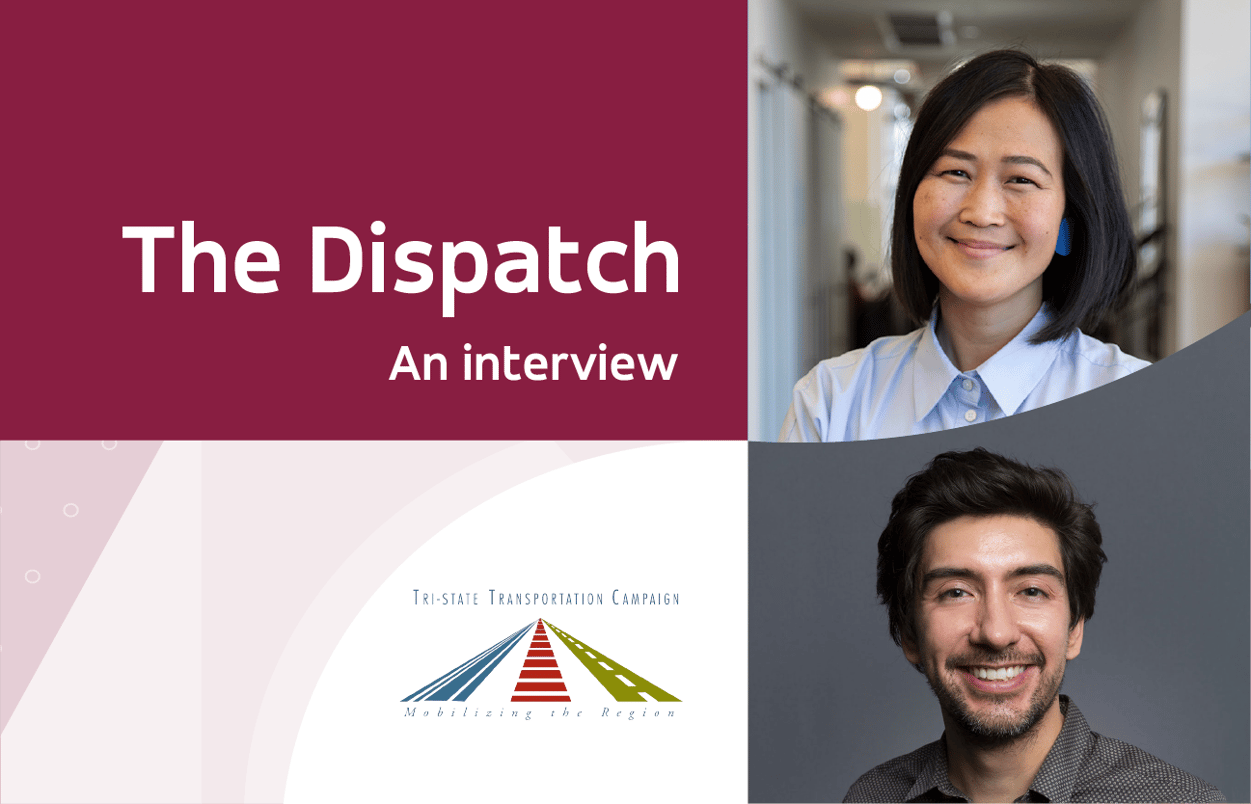Don't miss another podcast. Sign up here.
Nick Sifuentes knows what it takes to get transportation policy passed in the United States. As Executive Director of the Tri-State Transportation Campaign (TSTC), his day-to-day involves effecting change at every level of the transit ecosystem, with a focus on the New York, New Jersey, and Connecticut metropolitan area.
TSTC’s work involves research and analysis that informs detailed reports on transportation challenges in the US, with a focus on:
- Fixing commutes.
- Making transit fair.
- Meeting climate goals.
- Stopping pedestrian deaths.
“The more people we have in shared vehicles, the fewer vehicles there are on the road in total. Does that alleviate our congestion problem? Absolutely.” After synthesizing their findings, the team then brings them to the communities they affect — communities that tend to be transit-dependent, low-income, and primarily populated by people of color.
As Sifuentes puts it: “We basically say: ‘Hey, we’ve identified some problems. Is this something you care about? Is this something we should all fight for together?” If the answer’s yes, then the real work begins. Sifuentes and his team take a multipronged approach, involving everything from tapping the news media to elevate public awareness to collaborating with policymakers and elected officials to make lasting improvements to transit.
But with COVID-19, many of the advancements TSTC has won in the past several years — including congestion pricing in New York City, a revitalization of the bus networks in New York City and New Jersey, and a commitment from NYC’s Metropolitan Transit Authority (MTA) and the New Jersey Transit Corporation (NJ Transit) to fully electrify all of their fleets — have been put on pause. “[This progress] all depends on capital dollars and right now a lot of agencies, the MTA and NJTransit included, are looking at using capital dollars to try and cover operations costs, where it’s allowed by law. A lot of what we worked very hard for is at risk right now.”  But it’s not all doom and gloom. Sifuentes points to one bright spot in particular: as the pandemic prevented many from traveling as frequently and roads emptied out as a result, people have been able to experience what our world could look like without crippling congestion. “Our streets don’t have to be clogged with cars all the time. We can have outdoor dining, we can have more bike space...we can have more bus lanes! We need to rethink how we allocate our street space and there’s a huge role for the private sector to play” Sifuentes believes microtransit , in particular, is key to keeping this momentum going and making permanent improvements to the way people move around. “The more people we have in shared vehicles, the fewer vehicles there are on the road in total. Does that alleviate our congestion problem? Absolutely.” In this conversation with Ya-Ting Liu, Via’s Director of Government Affairs and Policy, we dig deep into all of this, plus the top three things that should be on every commuter’s mind. Take a listen above.
But it’s not all doom and gloom. Sifuentes points to one bright spot in particular: as the pandemic prevented many from traveling as frequently and roads emptied out as a result, people have been able to experience what our world could look like without crippling congestion. “Our streets don’t have to be clogged with cars all the time. We can have outdoor dining, we can have more bike space...we can have more bus lanes! We need to rethink how we allocate our street space and there’s a huge role for the private sector to play” Sifuentes believes microtransit , in particular, is key to keeping this momentum going and making permanent improvements to the way people move around. “The more people we have in shared vehicles, the fewer vehicles there are on the road in total. Does that alleviate our congestion problem? Absolutely.” In this conversation with Ya-Ting Liu, Via’s Director of Government Affairs and Policy, we dig deep into all of this, plus the top three things that should be on every commuter’s mind. Take a listen above.




